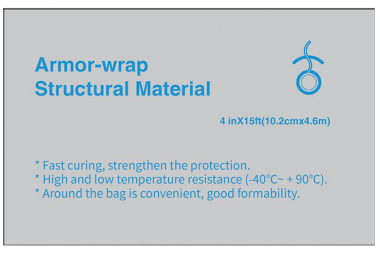Thermal Insulation Tape for High Temperature Applications
Thermal insulation tape plays an essential role in various industrial and residential applications, particularly where high temperatures are involved. Its primary function is to provide thermal resistance, thereby preventing heat transfer and ensuring safety and efficiency in operations. This article will delve into the properties, applications, and benefits of high-temperature thermal insulation tape, exploring why it is indispensable in many scenarios.
High-temperature thermal insulation tape is designed to withstand extreme heat without losing its adhesive properties or structural integrity. Typically made from silicone, fiberglass, or specialized polymers, this tape can endure temperatures that exceed typical plastic tapes. Some high-performance varieties can resist temperatures of up to 260°C (500°F) or even higher. This resilience makes it ideal for insulating hot surfaces, securing thermal insulation materials, and protecting cables or wires from heat exposure.
One of the most common applications of thermal insulation tape is in the automotive industry. Engine components often operate at high temperatures, and insulating tapes are used to safeguard sensitive parts from excessive heat damage. By using high-temperature tape, manufacturers ensure longer-lasting performance and prevent premature wear and tear, which ultimately contributes to vehicle reliability and safety.
Similarly, in the aerospace sector, where extreme temperatures are an everyday occurrence, high-temperature thermal insulation tape is employed to protect critical components from thermal fluctuations. This tape secures insulation blankets around fuel lines and engine parts, ensuring consistent performance and safety during flight operations. Furthermore, the lightweight nature of thermal insulation tape aids in maintaining the overall weight efficiency of aircraft.
thermal insulation tape high temperature

In industrial settings, thermal insulation tape is used in various machinery and equipment to improve energy efficiency. Insulating pipes, ducts, and other hot surfaces with this tape not only minimizes heat loss but also protects workers from potential burns and injuries. By reducing energy wastage, industries can achieve cost savings while enhancing workplace safety.
The electrical industry also benefits greatly from high-temperature thermal insulation tape. Used extensively in wiring systems and electronic components, it provides a protective barrier against heat, preventing degradation and ensuring that electrical systems maintain operational integrity. This tape is particularly vital in high-voltage applications where maintaining insulation properties is critical for safety and functionality.
Moreover, high-temperature thermal insulation tape is highly versatile and can be used in residential applications as well. Homeowners may find it useful for insulating heating ducts, water pipes, and other surfaces where heat retention is important. This can translate to lower energy bills and improved comfort within the home.
In conclusion, high-temperature thermal insulation tape is a crucial component across multiple sectors. Its ability to withstand extreme heat while providing thermal resistance makes it essential for automotive, aerospace, industrial, and residential applications. By investing in quality thermal insulation tape, businesses and homeowners alike can ensure safety, enhance performance, and optimize energy efficiency in their operations. As industries continue to evolve and place higher demands on materials, the importance of thermal insulation tape will only grow, solidifying its place as a vital tool in modern applications.
-
XIANGFAN Rubber Tape-Ultimate Solutions for All Your Insulation NeedsNewsJun.24,2025
-
XIANGFAN Rubber Tape-Protection for Industrial and Residential ApplicationsNewsJun.24,2025
-
XIANGFAN Rubber Tape: Superior Safety and Sealing for Demanding EnvironmentsNewsJun.24,2025
-
XIANGFAN Rubber Tape: Reliable Solutions for Every Electrical ChallengeNewsJun.24,2025
-
XIANGFAN Electrical & Industrial Tape: Powering Reliability Across IndustriesNewsJun.24,2025
-
XIANGFAN Electrical & Industrial Tape: Excellence in Every ApplicationNewsJun.24,2025
